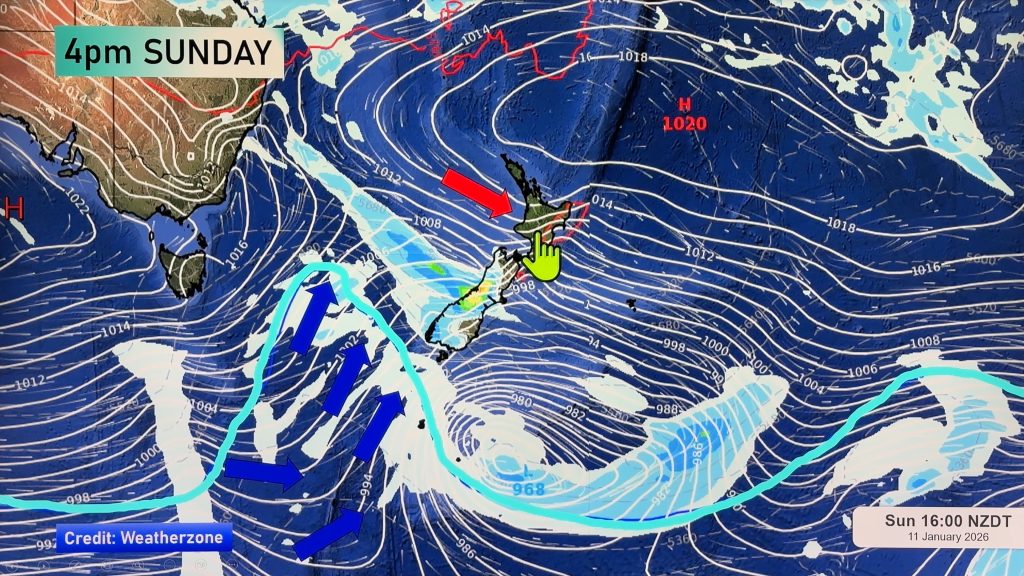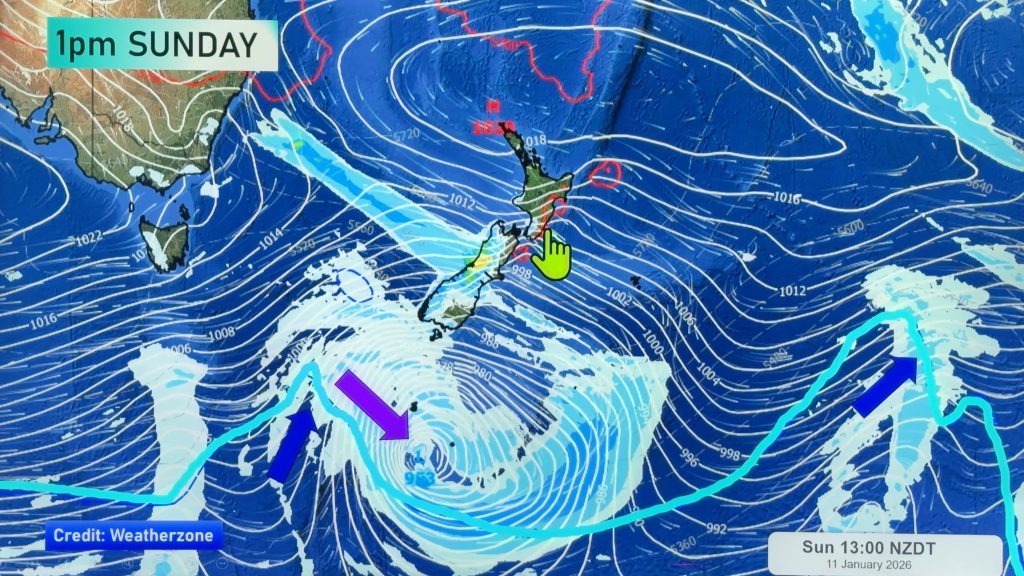Week in Weather: What’s Been Making Headlines this Week
21/11/2014 6:00pm

> From the WeatherWatch archives
The worst weather week of spring so far is nearly finished – though as we will see later, there’s still a sting in the tail of the current northwesterly airflow dominating the country’s conditions over the past 7 days.
We started the week off on the wrong foot – after a weekend of severe weather threw many New Zealander’s plans into chaos, and caused power cuts in the Eastern Suburbs of Auckland.
Less than a month after Auckland’s blackout which affected nearly 100 thousand customers, 18,000 homes were left without power on a wild and windy Saturday night.
Lines company Vector says it was caused by water, and it’s got nothing to do with the last month’s Penrose substation fault that left tens of thousands of households in the dark.
As the spring winds continue to blow across many regions this month many have been asking WeatherWatch.co.nz ‘when is the next high coming?’.
WeatherWatch.co.nz’s Head Analyst Philip Duncan answers that very question, here.
In more global news, there were some stark warnings to world leaders after last weekend’s G20 summit in Brisbane, where Climate Change emerged as the major issue on everyone’s minds.
The New Zealand Government is following Barack Obama’s lead with a contribution of $3 million to the global effort.
John Key says the time is right for leaders to tackle the issue.
The president of the Seychelles has urged the planet’s small island nations to unite for an unprecedented campaign against climate change or else drown.
The rallying call came at the start of a two-day summit of the Alliance of Small Island States (AOSIS), a coalition of small island and low-lying coastal countries, to prepare for global climate talks to take place in Lima, Peru in December.
Seychelles President James Michel, whose Indian Ocean island nation is hosting the meeting, siad publicly that the rest of the world “cannot afford” to ignore them anymore.
Across the Tasman, Australia is finishing spring with a heatwave, as southern and eastern states bake in temperatures consistently in the early to mid 30s.
SA, Melbourne, Sydney and Brisbane all pushed the mercury north of 30 this week, as a trough from the west dragged the heat across the country.
Along with the heat, Brisbane was thrown into chaos by a severe storm on Wednesday evening, with flash flooding in the city centre trapping commuters and submerging cars, and widespread power outages reported.
Major train stations in Brisbane’s inner city were closed, forcing delays across the rail network as far as the Gold Coast.
At one point nearly 15,000 Energex customers were without power in the Brisbane, Ipswich and Redlands areas.
And an Australian climatologist has warned that El Niño conditions this year are more likely than ever to cause bushfires in southern states and will pose huge problems in the coming season.
Climatologist Professor Roger Stone from the University of Southern Queensland and the UN World Meteorological Organisation, said the impact of a possible El Nino depends very much on where you are in Australia.
“The southern states, especially Victoria, Tasmania, southern New South Wales and… south-west Western Australia tend to have an increased bushfire risk,” he said.
And over in the USA, bushfires have been the last thing on the minds of freezing residents, as nearly half of the entire continental United States sits under significant levels of snow.
Stories about acts of bravery and kindness were emerging after as much as 6 feet of snow covered Buffalo, New York, one of the hardest-hit areas in a week when snowstorms and record-low temperatures whacked much of the country.
Seven deaths in the region have been blamed on the extreme storm, authorities said.
And finally, a warming world could have drastic effects on the rates of lightning strikes around the globe, according to a new study released this week.
Lightning strikes in the United States will likely increase by nearly 50 per cent by the end of the century as the world gets warmer and wetter, according to researchers publishing findings in the journal Science.
The team concluded that for every degree Celsius the world warms, lightning strikes will go up by 12 per cent.
Don’t forget to check out Philip Duncan’s latest weather video for your weekend outlook, and keep an eye out for our new poll, coming Sunday morning.
– Drew Chappell, WeatherWatch.co.nz
– Image: CNN
Comments
Before you add a new comment, take note this story was published on 21 Nov 2014.





Add new comment